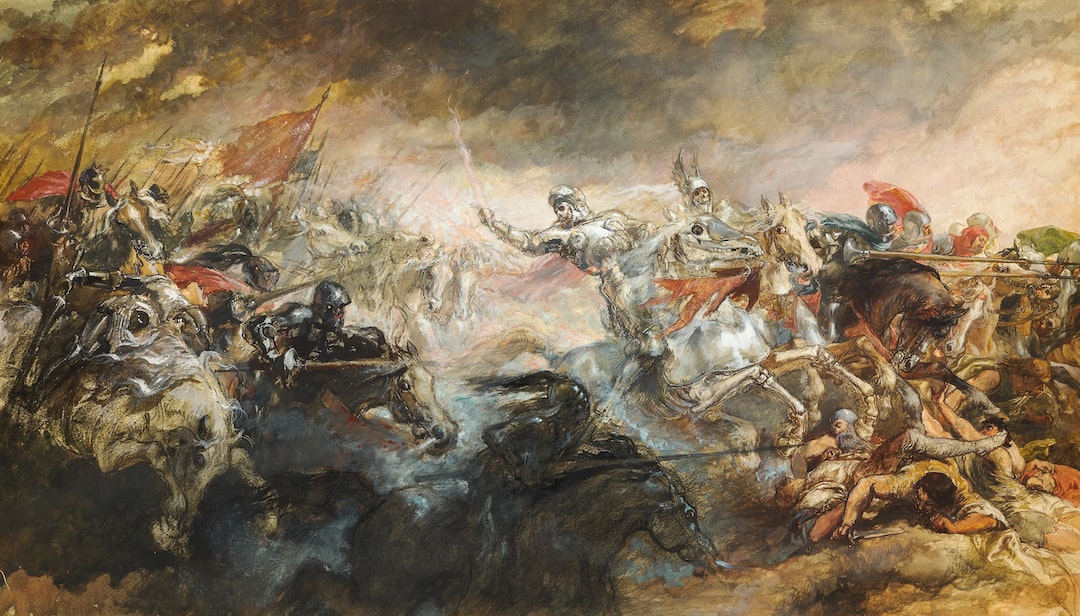Introduction
The Battle of Visby in 1361, also known as Visby’s Last Stand, was a brutal and tragic event that took place in the walled town of Visby in Sweden. King Valdemar and his Danish army attacked the town on Midsummer, leading to the slaughter of over 1,800 townspeople, including many feudal peasants who had been hastily recruited to defend the town. Today, the legacy of this event is still felt in Gotland, where the first mass grave was discovered in 1905, and excavations continue to uncover the remains of those who fell.
An Overview
The Battle of Visby is remembered not only as a tragic event in Gotland’s history but also as an example of the brutality of medieval warfare. It serves as a reminder of how devastating armed conflicts can be, especially for ordinary people caught in the middle of political and military struggles. The excavation and study of the mass graves in Visby have also provided valuable insights into the lives of medieval people, their health, diet, and the weapons and tactics used in warfare.
In the summer of 1361, the walled town of Visby in Gotland, Sweden became the site of a brutal battle between King Valdemar and his Danish army and a hastily recruited army of feudal peasants. Despite the town’s wealthy merchants looking on, the peasants were slaughtered by the Danes right outside the main gates, resulting in the deaths of around 1,800 townsfolk. In 1905, the first mass grave at Visby was discovered and since then, over 1,185 bodies have been recovered with many more still waiting to be excavated. This event, known as Visby’s Last Stand, serves as a reminder of the brutality and devastation of medieval warfare.
The Prosperous Town of Visby
On Midsummer 1361, the town of Visby, located on the island of Gotland in Sweden, was under attack by King Valdemar and his Danish army. The town was a prosperous trading center, home to rich merchants and a thriving economy. However, the town was not prepared for the Danish assault, and a hastily recruited army of feudal peasants was unable to defend the town against the well-trained and well-equipped Danish forces. The Battle of Visby marked a turning point in Nordic history and is remembered as one of the most brutal and deadly conflicts in the region’s history.
The Brutal Assault of the Danish Army
The Danes easily breached the town’s walls and proceeded to massacre the townspeople. The fighting was particularly brutal outside the main gates, where the Danish forces cut down the peasant army in a matter of minutes. The rich merchants of Visby watched helplessly as their town was laid to waste, with over 1800 townsfolk killed in the most brutal and clinical way. The Danish forces showed no mercy during the attack, even killing those who sought refuge in churches and hospitals. The massacre left a lasting impact on the town of Visby and the island of Gotland, shaping their histories for centuries to come.
The Aftermath and the Discovery of Mass Graves
The Battle of Visby left a lasting impact on the town and its people. The once-prosperous town was left in ruins, with many of its citizens either dead or enslaved. The battle also had a profound impact on Sweden’s relationship with Denmark, with tensions between the two nations remaining high for decades to come. In 1905, the first mass grave at Visby was discovered, and over the years, more than 1185 bodies have been recovered from the site. Many more are believed to be still buried beneath the town’s streets, awaiting excavation. The mass graves serve as a haunting reminder of the brutal nature of warfare and the devastating toll it can take on innocent civilians.
The Legacy of Visby’s Last Stand
The Battle of Visby stands as a testament to the horrors of war and the devastating impact it can have on civilians caught in the crossfire. The mass graves found in Visby serve as a reminder of the brutal and senseless violence that can occur during times of conflict. The battle also highlights the importance of being prepared for potential attacks and the need for strong defenses to protect against invasion. Ultimately, the story of Visby’s last stand is a tragic one, but it serves as a warning to future generations of the devastating consequences of war.
Conclusion
The Battle of Visby stands as a stark reminder of the brutality of medieval warfare and the devastating toll it could take on civilian populations. It also highlights the importance of preserving historical sites and artifacts, such as the mass graves in Visby, in order to honor the memory of those who suffered and died in the past. As we continue to learn more about the events of Visby’s Last Stand, we can gain a deeper understanding of the struggles and sacrifices of our ancestors and the impact they had on shaping the world we live in today.


